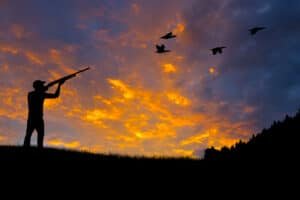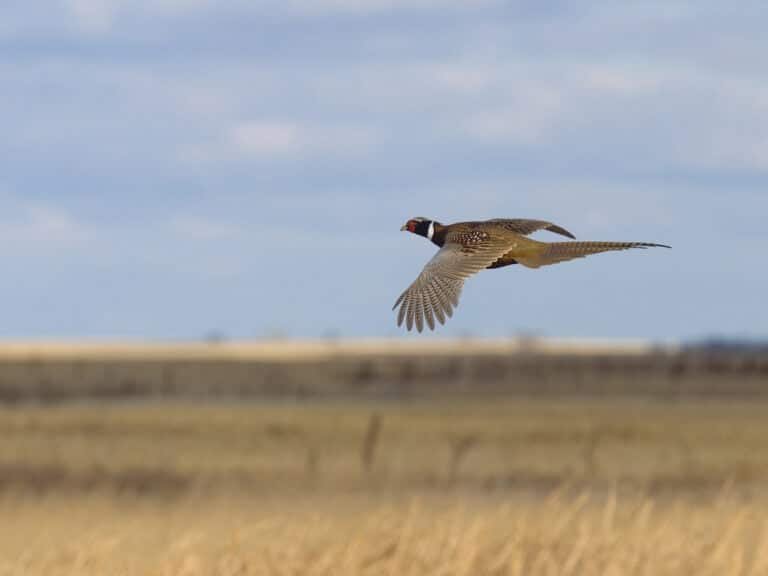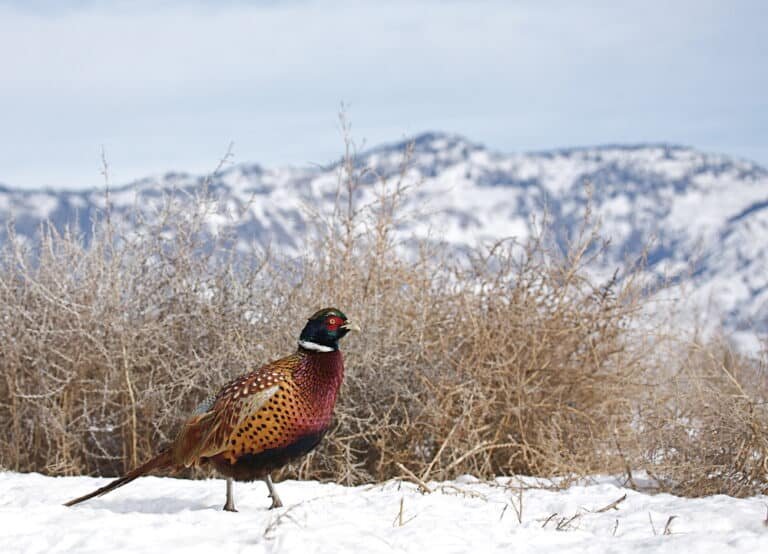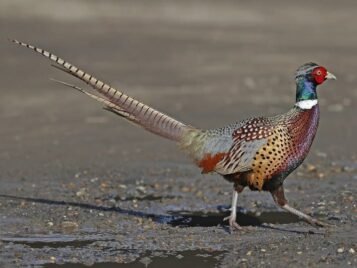Pheasant Season: The Ultimate Guide
Pheasant season awaited by hunters is when enthusiasts flock to fields and forests in pursuit of the majestic and elusive pheasant. This annual event holds great significance for both seasoned sportsmen and novices alike.
It not only provides an opportunity to test one’s shooting skills but also offers a chance to immerse oneself in the splendors of nature. Pheasant season celebrates tradition, camaraderie, and the thrill of the hunt.
Definition and Significance of Pheasant Season
Pheasant season is the designated period during which hunting for pheasants is legally permitted. Wildlife management authorities determine it based on population health, breeding cycles, and conservation efforts.
This regulated timeframe ensures sustainable hunting practices while preserving the pheasant population for future generations. The importance of pheasant season extends beyond its recreational aspects.
It manages wildlife populations, controls habitat balance, and supports rural economies through tourism and local businesses associated with hunting activities. Furthermore, pheasants hold cultural significance in many regions worldwide, often symbolizing resilience, beauty, and freedom.
Brief History of Pheasant Hunting
The origins of pheasant hunting can be traced back thousands of years to ancient civilizations that revered this bird as a prized game species. The earliest records indicate that Chinese nobility engaged in falconry hunts targeting wild pheasants as early as 500 BC. Over time, this aristocratic pastime spread across Europe through trade routes established during the Middle Ages. In Europe during the 18th century, specifically in Britain under King George III’s reign (1760-1820), extensive efforts were made to introduce and establish pheasants for sport hunting.
The success of these endeavors led to the growth of game preserves and the creation of formal shooting traditions that still thrive today. The popularity of pheasant hunting eventually made its way to North America, where it took hold in the vast expanses of farmland and prairies, particularly in states like South Dakota, Iowa, and Kansas.
Today, pheasant hunting has evolved from a privileged endeavor reserved for nobility to a cherished pastime accessible to passionate hunters from all walks of life. Its rich heritage continues to captivate enthusiasts and promises an exhilarating experience amidst nature’s grandeur.
Overview of Pheasants
Description and Characteristics of Pheasants
Pheasants are magnificent birds known for their vibrant plumage and graceful appearance. They belong to the family Phasianidae and are classified under the genus Phasianus. The most commonly encountered species is the Ring-necked Pheasant (Phasianus colchicus), which features a striking combination of colors, including rich chestnut, iridescent green, and a distinct white ring around its neck.
Male pheasants, also called cocks or roosters, exhibit larger size than females, with long tail feathers that add to their grandeur during courtship displays. On the other hand, female pheasants, referred to as hens or peahens, have more subdued appearances with mottled brown feathers for effective camouflage.
Habitat and Distribution of Pheasants Worldwide
Pheasants are native to Asia but have been introduced to various regions worldwide due to their desirability as game birds. In their natural habitat, they thrive in diverse ecosystems such as grasslands, scrublands, woodlands, and agricultural areas with ample cover for nesting.
Different species of pheasants show preferences for specific habitats; for example, the Ring-necked Pheasant favors agricultural fields bordered by hedgerows or thickets. The distribution of pheasant populations extends across multiple continents.
In Asia, they are found in countries such as China (including Taiwan), Japan, South Korea, and parts of Russia. Europe is home to native populations in countries like Turkey and Greece, while introduced populations can be found in England and other European nations where hunting traditions prevailed upon introduction.
In North America alone, pheasant introductions have made them a sought-after game bird across vast regions. The United States and Canada boast thriving pheasant populations, with notable concentrations in states like South Dakota, Iowa, Kansas, and Nebraska.
These areas provide favorable habitats with a mix of grasslands and croplands that offer both cover and food sources for pheasants. Overall, the adaptability of pheasants has contributed to their successful establishment in numerous locations worldwide, making them a prized target for hunters during the designated seasons.
Pheasant Hunting Seasons
Pheasant hunting seasons vary across different regions and countries due to variations in climate, pheasant populations, and conservation efforts. Understanding the unique characteristics of these seasons can help hunters plan their expeditions more effectively. Let’s delve into the hunting seasons in three prominent regions: North America, Europe, and Asia.
North America (United States and Canada)
In North America, pheasant hunting is particularly popular in the United States and Canada. In the United States, pheasant season typically starts in autumn when cooler temperatures prevail.
The exact dates of the season vary from state to state based on their respective wildlife management regulations. For instance, South Dakota’s season usually commences around mid-October and lasts through January, offering ample opportunity for hunters to pursue this game bird.
Similarly, states like Nebraska, Kansas, Iowa, and Minnesota also have well-defined pheasant hunting seasons that align with regional population dynamics. Moving northward into Canada, provinces like Alberta are known for their bountiful pheasant populations.
Here, too, specific dates for the hunting season may differ slightly depending on local regulations governing bag limits and licensing requirements. However, hunters must keep themselves updated on any changes or amendments by wildlife management authorities each year.
Europe (United Kingdom, France, Germany)
Europe boasts a rich legacy of pheasant hunting traditions across countries like the United Kingdom (UK), France, and Germany. In the UK specifically, driven shooting is common during pheasant season, where beaters strategically flush out birds towards waiting guns positioned along a line or within shooting drives.
The UK’s formalized shooting season runs from October 1st to February 1st each year but may vary depending on landowner agreements or regional nuances. France has its own set of regional variations regarding pheasant hunting.
While the general season spans from October to February, hunters must adhere to specific regulations set by individual departments (administrative divisions) within the country. The German pheasant hunting season, from October through January, typically aligns with France.
Asia (China, South Korea)
In Asia, China and South Korea have well-established pheasant hunting traditions. In China, the pheasant hunting season varies across provinces due to differences in climate and local regulations.
Typically, the season occurs from autumn through winter when pheasants are abundant and well-distributed in various regions. South Korea also offers exciting opportunities for pheasant hunting enthusiasts.
The national hunting season runs from November 1st to February 28th each year. However, hunters must obtain appropriate licenses and follow strict guidelines from regional offices or wildlife management authorities.
Regulations and Licensing Requirements for Pheasant Hunting
Regulations and licensing requirements play a vital role in ensuring sustainable conservation practices while allowing responsible hunters to enjoy their pursuit of these magnificent game birds. Hunters must familiarize themselves with local laws governing bag limits (the number of birds legally harvested per day), shooting hours (typically during daylight only), and specific licensing procedures.
Depending on the region or country, hunters may need a general hunting license and additional endorsements specifically permitting pheasant hunting. Regulations may also include restrictions on firearm types or gauges allowed during hunts for safety reasons.
Furthermore, some areas may impose additional regulations such as mandatory hunter education courses or habitat stamp requirements to promote ethical hunting practices and contribute funds to conservation efforts. By understanding these seasons’ variations across different regions and adhering to relevant regulations, hunters can embark on their expeditions fully prepared while respecting wildlife conservation principles established worldwide.
Choosing the right gear for pheasant hunting
Shotguns: gauge selection, choke options, barrel length considerations
When selecting a shotgun for pheasant hunting, several factors demand careful consideration. Firstly, the gauge selection is crucial. The most popular gauges for pheasant hunting are 12 and 20 gauge.
The former offers a wider range of loads and patterns, making it suitable for various shooting distances, while the latter provides lighter recoil and increased maneuverability in dense cover. Additionally, choke options play a significant role in determining shot pattern density and effective range.
A modified or improved cylinder choke is often recommended for pheasants to strike an ideal balance between pellet spread and distance. Furthermore, barrel length considerations come into play as longer barrels generally offer improved swing dynamics for smooth tracking of fast-flying birds.
Ammunition: shot size recommendations, load types (lead vs. non-toxic)
Selecting the appropriate ammunition is essential for successful pheasant hunting. Shot size recommendations typically fall within the range of #4 to #6, providing an optimal balance between pellet count and energy transfer. Smaller shot sizes like #6 offer denser patterns but limited penetration than larger sizes like #4, which carry more energy but sacrifice some pattern density.
Moreover, hunters should consider load types due to environmental regulations and potential health risks associated with lead exposure. Non-toxic alternatives such as steel or bismuth shot have gained popularity since they are environmentally friendly and provide effective results when used at appropriate velocities.
Clothing: camouflage patterns, layering techniques for different weather conditions
Appropriate clothing is crucial for comfort and improving your chances during pheasant hunts. Opting for camouflage patterns that match the habitat you will be hunting can significantly enhance your concealment.
Patterns mimicking grasses, foliage, and earthy tones work well in most pheasant hunting environments. Layering techniques are vital for adapting to changing weather conditions during the season.
Start with a moisture-wicking base layer to keep sweat away from your skin, followed by insulating layers like fleece or down jackets to retain body heat. Top it off with a weatherproof outer shell that protects against wind and rain.
Training dogs for pheasant hunting
Pheasant hunting and well-trained bird dogs often go hand in hand, as they can greatly enhance the overall hunting experience. Popular breeds used in pheasant hunting include Labrador Retrievers, English Setters, German Shorthaired Pointers, and Brittany Spaniels. These breeds possess instincts for retrieving or locating game birds and are generally trainable for various tasks involved in pheasant hunts.
Training methods focus on instilling obedience commands such as sit, stay, and heel; developing reliable recall skills; introducing scent work to help them locate and flush birds; teaching proper retrieving techniques; and exposing them gradually to gunfire sounds to prevent negative associations. By considering these factors related to gear selection like shotguns and ammunition, appropriate clothing choices for varying weather conditions, and training methods for bird dogs used in pheasant hunting, such as Labrador Retrievers or English Setters—hunters can greatly optimize their chances of success during the season while ensuring an enjoyable experience amidst nature’s offerings.
Phenomenal Pheasants: Species Spotlight
Description of Common Species Hunted During the Season:
The pheasant season offers hunters a fascinating opportunity to encounter and pursue various species of these delightful birds. Among the most commonly hunted pheasant species is the Ring-necked Pheasant (Phasianus colchicus).
Renowned for its vibrant plumage, the male Ring-necked Pheasant boasts a distinctive white neck ring that sets it apart from other species. With its long, pointed tail feathers and iridescent green, gold, and brown hues adorning its body, this majestic bird creates a remarkable sight for avid hunters.
Another visually striking species often targeted by enthusiasts during the pheasant season is the Golden Pheasant (Chrysolophus pictus). Displaying an array of vivid colors, this bird’s plumage includes a golden crest on its head, bright red underparts, and richly patterned wings featuring a combination of yellow, orange, and black markings.
The Golden Pheasant’s beauty is captivating and a testament to nature’s artistic prowess. The elegant Silver Pheasant (Lophura nycthemera) captivates hunters and birdwatchers with its unique features.
Characterized by shimmering silver-gray feathers covering most of its body except for distinct black markings on its face and neck region, this species stands out amidst the foliage while maintaining an air of gracefulness. While not as commonly hunted as their Ring-necked or Golden counterparts, encountering a Silver Pheasant during pheasant season is remarkable.
These pheasants possess distinctive characteristics that contribute to their allure among hunting enthusiasts. Their remarkable plumage and exquisite features make them worthy targets during the season, providing both a thrilling pursuit and an opportunity to appreciate the beauty that nature has bestowed upon these avian wonders.
Prehunt Rituals and Strategies
Preliminary Planning and Scouting
Before embarking on a pheasant hunting expedition, engaging in thorough planning and scouting activities is vital. Familiarize yourself with the hunting area by studying topographic maps and identifying potential roosting sites, food sources, and water bodies.
Visit the location beforehand to scout for signs of pheasant activity, such as tracks, droppings, flushing patterns, or feathers. This preliminary groundwork will enable you to optimize your hunting experience by strategically positioning yourself in areas frequented by pheasants.
Honing Shooting Skills
Pheasant hunting demands precision and accuracy during those thrilling moments when a bird flushes from its cover. To improve your shooting skills before the season begins, consider visiting a shooting range or participating in clay pigeon shooting sessions.
Practice proper gun handling techniques, focus on maintaining a steady aim, and develop quick reflexes for swift target acquisition. Regular practice will enhance your muscle memory and increase your chances of successfully hitting fast-flying pheasants.
Tactics Employed during Pheasant Season
Effective tactics can significantly impact your success rate when it’s finally time to head out into the field during pheasant season. One popular strategy is “blocking,” where hunters position themselves strategically along fields or hedgerows to encircle game birds as they are flushed toward them by beaters or dogs.
Another commonly used tactic involves working in pairs or small groups called “drives,” where hunters walk through suitable habitats while flushing birds into the air for others to take shots at. Communicating effectively with fellow hunters is essential to ensure safety while maximizing efficiency.

Conclusion
Pheasant season not only offers an exhilarating opportunity for outdoor enthusiasts to test their skills but also presents a chance to immerse oneself in the beauty of nature. From the meticulous planning and scouting stages to honing shooting skills, every aspect of pheasant hunting demands dedication and attention to detail.
By embracing these pre-hunt rituals and employing effective strategies during the season, hunters can forge lasting memories while participating in a time-honored tradition. So, gear up, embrace the thrill of the hunt, and may your days be filled with successful flushes and unforgettable experiences amidst nature’s splendor.






